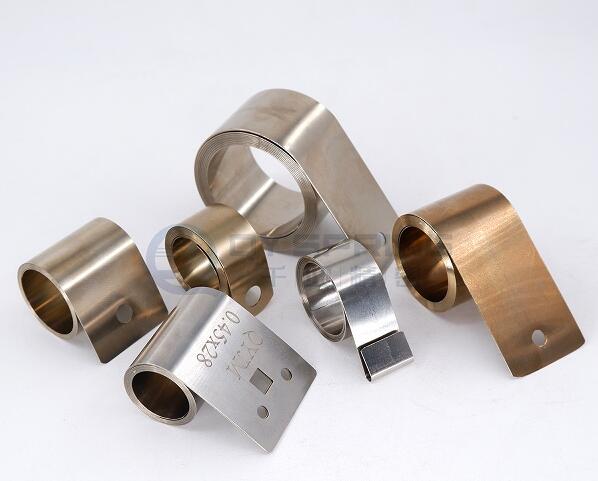

2022-09-14
Spring to ensure good elastic performance, that is, absorb a lot of elastic energy without plastic deformation; Sufficient plasticity and toughness to prevent impact fracture. According to the stress nature, the spring can be divided into tension spring, compression spring, torsion spring and bending spring. According to the shape, it can be divided into dish […]

2022-09-14
“My new stainless steel product specification requires’ passivation ‘. Do I need it?” Our answer is that you may not. That’s why. Passivation is the process of protecting stainless steel from corrosion by adding an oxide layer on its outer surface. Although some stainless steel product specifications require passivation to reduce corrosion risk, most of […]
![[Qianye precision]Benefits of choosing custom springs [Qianye precision]Benefits of choosing custom springs](https://wp-static-chuangli.oss-us-west-1.aliyuncs.com/qianyespring/uploads/2022/09/cd0d165e9302c73978d21d8cbf01c48a.jpg)
2022-09-14
Purchasing special components for equipment is always an obstacle for engineers designing new products. Many industries, from automotive and aerospace to medical and construction, need to customize springs for special applications. Spare springs are ideal for short turnaround times, but they are not suitable for your equipment specification. To this end, custom springs may be […]
![[Qianye precision]Understand all aspects of power spring [Qianye precision]Understand all aspects of power spring](https://wp-static-chuangli.oss-us-west-1.aliyuncs.com/qianyespring/uploads/2022/09/9bca1653601cfed0253482a381c1ad63.jpg)
2022-09-14
What is a power spring? 1. The power spring is a coil spring, which is made of stainless steel band. Power springs store and release rotational energy in the form of torque through a central mandrel or spring housing. 2. The power spring has a power rotation torque in a limited […]

2022-09-14
Design and manufacture a complete set of constant force springs for a variety of applications in almost all industries, from medical care to aerospace and general household products. The constant force spring is different from the traditional spiral wound spring. They are made of pre tensioned high-yield metal strips (usually stainless steel) rather than wires. […]

2022-09-14
Variable force springs and variable torsion springs can expand negative gradients and positive gradients to form a single spring. It breaks through the influence of the traditional spring affected by Hooke’s law, so that the stroke and force are no longer proportionally increased, but accompanied by various elastic force-displacement combinations, such as negative slope. Therefore, a […]

2022-09-14
A spring is a mechanical part that works with elasticity. Generally made of spring steel. It is used to control the movement, buffering or vibration, energy storage, force measurement, etc. of mechanical parts, and is widely used in machines and instruments. (1) Elastic limit – the elastic limit is related to the tensile strength. Selecting a material […]

2022-09-14
Constant force springs are mechanical devices used in applications that typically require some kind of balance or retraction mechanism. In design and function, constant force springs differ from the more common types of coil springs. They apply a consistent linear force or torque that remains constant over a wide range of motion. When a coil spring […]

2022-09-14
When you walk into your office building on your way to work every day, or into your local bank, or any commercial facility, you may open a heavy glass door. When you cross the threshold, the door closes behind you, and you don’t think about it. However, the heavy glass door was probably closed by […]
Phone